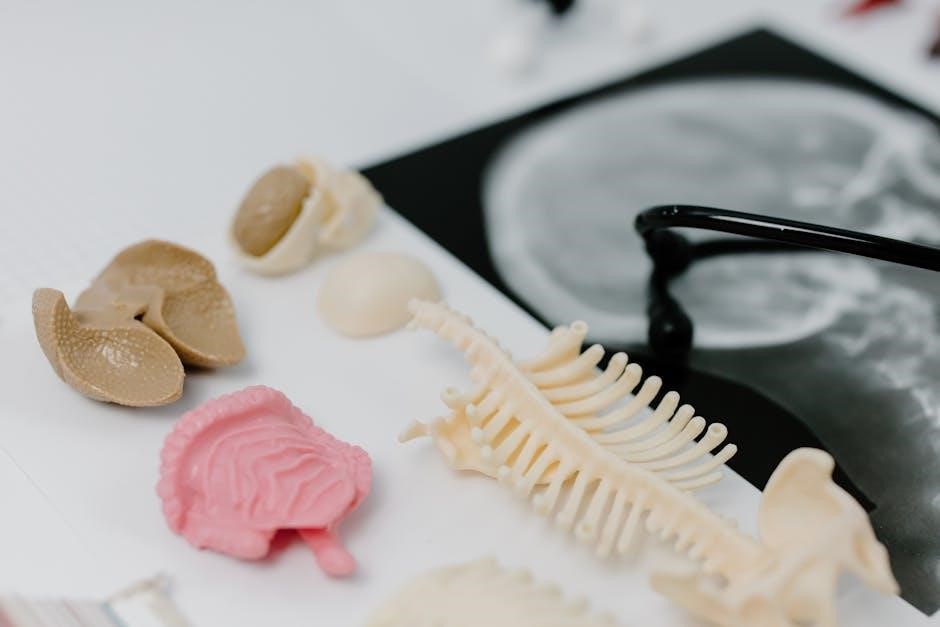In today’s fast-paced world, finding peace seems elusive, but mindfulness offers a practical path to calm and clarity. Discover how simple practices like breathing techniques and mindful awareness can transform your life, helping you navigate stress and uncover lasting inner peace. This guide provides accessible tools to cultivate joy and resilience, even in chaos, making mindfulness a powerful solution for modern living.

Why Mindfulness Matters in Today’s Fast-Paced Society

In a world dominated by constant distractions and mounting pressures, mindfulness emerges as a vital tool for maintaining balance. By fostering present-moment awareness, it helps individuals counteract the overwhelming stress and anxiety of modern life. Mindfulness practices, such as breathing techniques and body awareness, empower people to regain control over their emotions and thoughts. This leads to improved emotional intelligence, enhancing communication and relationships. Additionally, mindfulness cultivates resilience, enabling individuals to navigate life’s challenges with greater clarity and confidence. In a society that often prioritizes speed over well-being, mindfulness offers a practical solution to reconnect with oneself and find peace amidst chaos. Its universal appeal makes it accessible to everyone, regardless of background or circumstances.
Understanding the Concept of Mindfulness and Its Benefits
Mindfulness is the practice of being fully present in the moment, observing thoughts and feelings without judgment. Originating from ancient meditation traditions, it has evolved into a modern tool for mental well-being. By cultivating awareness of the present, mindfulness helps break the cycle of stress, anxiety, and unhappiness. It promotes emotional regulation, allowing individuals to respond to challenges more thoughtfully. Research shows mindfulness reduces stress hormones like cortisol and enhances focus and clarity. It also fosters gratitude and joy, leading to a more fulfilling life. This simple yet powerful practice is accessible to everyone, requiring no special skills or equipment. Regular mindfulness practice can transform daily life, offering lasting peace and emotional resilience.
Key Practices for Cultivating Inner Peace
Breathing techniques and posture awareness are essential for mindfulness, promoting calm and clarity. These practices help anchor the mind in the present, fostering inner harmony and resilience.

The Power of Breathing Techniques for Relaxation
Breathing techniques are a cornerstone of mindfulness, offering a simple yet profound way to calm the mind and body. By focusing on each breath, individuals can anchor themselves in the present moment, reducing stress and anxiety. Regular practice of mindful breathing helps cultivate awareness and relaxation, even in chaotic environments. These techniques, such as the 4-7-8 method or box breathing, are easy to incorporate into daily life, providing a quick escape from overwhelm. Consistent practice strengthens emotional resilience, fostering a sense of peace that permeates all aspects of life, making it easier to navigate challenges with clarity and composure.
Importance of Posture and Body Awareness
Posture and body awareness play a vital role in cultivating mindfulness and inner peace. When we align our body mindfully, we create a foundation for emotional and mental balance. Slouching or tension can reflect and amplify stress, while an upright, relaxed posture fosters calmness and clarity. Practices like mindful walking or yoga encourage heightened body awareness, helping us connect with physical sensations and release tension. By paying attention to our body’s signals, we can identify areas of stress and address them before they escalate. This awareness not only enhances physical comfort but also deepens emotional resilience, allowing us to navigate life’s challenges with greater ease and grace.
Practical Steps for Forgiveness and Letting Go
Forgiveness and letting go are essential for releasing emotional burdens and finding peace. Start by acknowledging your feelings without judgment, allowing yourself to process pain or resentment. Practice self-compassion, understanding that holding onto negativity harms you more than others. Mindfulness teaches us to observe emotions objectively, helping us detach from their weight. Small, intentional actions, like writing a letter (even if unsent) or silently wishing well, can foster healing. Remember, forgiveness doesn’t excuse others’ actions but frees you from their emotional grip. Letting go creates space for emotional freedom and resilience, enabling you to move forward with greater clarity and peace of mind.
Building a Mindfulness Routine
A consistent mindfulness routine helps cultivate calm and resilience. Start with short, daily practices, such as breathing exercises or mindful moments, to create a lasting habit that brings peace and clarity to your life.
Creating a Daily Meditation Practice
Establishing a daily meditation practice is a cornerstone of mindfulness. Start with just a few minutes each day, focusing on your breath or a guided meditation. Consistency is key—regular practice helps calm the mind and reduce stress. Begin with short sessions, gradually increasing as you grow more comfortable. Use guided meditations to ease into the habit, especially for beginners. Find a quiet space where you can sit comfortably, close your eyes, and simply be present. Over time, this practice will become a cherished ritual, fostering clarity, reducing anxiety, and nurturing inner peace. Track your progress to stay motivated and celebrate small milestones along the way;
How to Incorporate Mindfulness into Busy Schedules
Mindfulness can be seamlessly woven into even the busiest of schedules with simple, practical techniques. Start by dedicating just a few minutes daily to mindful breathing or a short meditation session. Use moments like waiting in line or commuting as opportunities for brief mindfulness exercises. Prioritize tasks mindfully, focusing on one thing at a time to enhance efficiency and reduce stress. Incorporate mindfulness into daily activities like eating or walking by fully engaging your senses. Even small pauses throughout the day to take a few deep breaths can recharge your energy and clarity. The key is to find moments, no matter how small, to anchor yourself in the present and cultivate calm amidst the chaos.

The Science Behind Mindfulness
Research shows mindfulness reduces stress and anxiety by altering brain activity in regions linked to emotional regulation. Studies demonstrate its effectiveness in combating depression through MBCT.
How Mindfulness Reduces Stress and Anxiety
Mindfulness scientifically reduces stress and anxiety by activating the brain’s relaxation response, lowering cortisol levels, and decreasing emotional reactivity. Regular practice breaks the cycle of negative thinking, fostering calm. MBCT, a mindfulness-based program, has proven as effective as medication in preventing depression relapse. By focusing on the present, mindfulness interrupts anxiety-inducing thoughts, promoting emotional balance. Practical techniques like mindful breathing and body awareness help manage stress, leading to long-term peace and well-being. These methods are supported by clinical evidence, making mindfulness a powerful tool for mental health in today’s fast-paced world.
The Role of MBCT in Combating Depression
Mindfulness-Based Cognitive Therapy (MBCT) is a highly effective approach in combating depression, proven to be as effective as medication in preventing relapse. By combining mindfulness practices with cognitive-behavioral techniques, MBCT helps individuals recognize and break negative thought patterns that contribute to depression. This approach encourages present-moment awareness, reducing rumination on past struggles or fears about the future. Studies show that MBCT significantly reduces symptoms of depression and enhances emotional resilience. Its structured, evidence-based methodology makes it a widely recommended treatment by health organizations, offering hope and practical tools for those seeking to manage depression and achieve lasting mental well-being.

Mindfulness in Relationships and Daily Life
Mindfulness enhances relationships by fostering empathy and improving communication, while also making daily tasks more manageable and fostering a sense of calm and clarity.
Improving Communication and Emotional Intelligence
Mindfulness significantly enhances communication by fostering active listening and clarity of expression, allowing for deeper connections. It cultivates emotional intelligence by increasing self-awareness, helping individuals recognize and manage their emotions effectively. This leads to more empathetic interactions, reducing misunderstandings and conflicts. Practical techniques from the book, such as mindful breathing and reflection, provide tools to navigate challenging conversations with calmness and poise. By being fully present in interactions, mindfulness strengthens relationships and promotes understanding, creating a foundation for meaningful and harmonious communication in daily life. These skills are essential for building resilience and fostering positive interactions, both personally and professionally.

Cultivating Gratitude and Happiness
Mindfulness practices foster gratitude and happiness by helping individuals appreciate life’s small joys and shift focus from negativity to positivity. By being fully present, one can recognize and savor moments of beauty and kindness, fostering a sense of contentment. The book emphasizes practical steps, such as daily reflections or gratitude journals, to cultivate these qualities. Mindfulness encourages a mindset that values the present moment, reducing dissatisfaction and enhancing overall well-being. This approach not only boosts happiness but also builds resilience, helping individuals navigate life’s challenges with greater ease and joy. Over time, mindfulness becomes a powerful tool for sustaining a positive outlook and fostering lasting fulfillment.

Sustaining Peace in Challenging Times
Mindfulness helps build resilience, enabling you to navigate adversity with calm and clarity. By fostering awareness and acceptance, it empowers you to sustain peace even in turmoil.
Developing Resilience Through Mindfulness
Mindfulness cultivates resilience by teaching you to approach challenges with clarity and calm. Regular practice strengthens your ability to observe difficulties without being overwhelmed, fostering emotional stability. By focusing on the present, mindfulness helps you break free from negative thought patterns and build a sense of inner strength. This resilience allows you to navigate life’s ups and downs with greater ease and confidence, transforming stress into opportunities for growth. Over time, mindfulness practice enhances your capacity to adapt and thrive, even in the face of adversity, leading to a more balanced and fulfilling life.
Overcoming Negative Thinking Patterns
Mindfulness offers a powerful way to break free from negative thought cycles that drain energy and hinder peace. By becoming more aware of your thoughts, you can learn to observe them without judgment, reducing their hold on your emotions. Regular mindfulness practice helps rewire the brain, fostering a more balanced perspective and emotional resilience. This guide provides practical steps to cultivate a mindful mindset, allowing you to respond to challenges with clarity rather than reacting impulsively. Over time, mindfulness practice empowers you to embrace life’s difficulties with greater ease, transforming negative patterns into opportunities for growth and fostering a deeper sense of inner calm and well-being.
Mindfulness offers a timeless path to peace, empowering you to embrace life’s challenges with clarity and calm. By integrating simple practices into daily life, you can cultivate lasting peace, transforming chaos into opportunity and fostering a deeper connection to yourself and the world.
Final Thoughts on Achieving Lasting Peace
Achieving lasting peace in a frantic world is not about escaping reality but embracing it with mindfulness. By focusing on the present moment, you can break free from cycles of stress and anxiety. Simple practices like mindful breathing and awareness of your thoughts can create profound changes. Remember, peace is not a destination but a journey—a continuous process of self-awareness and compassion. With consistency and patience, mindfulness becomes a powerful tool to navigate life’s challenges, fostering resilience and joy. Ultimately, peace is within reach, even in the most chaotic times, when you commit to mindful living.

